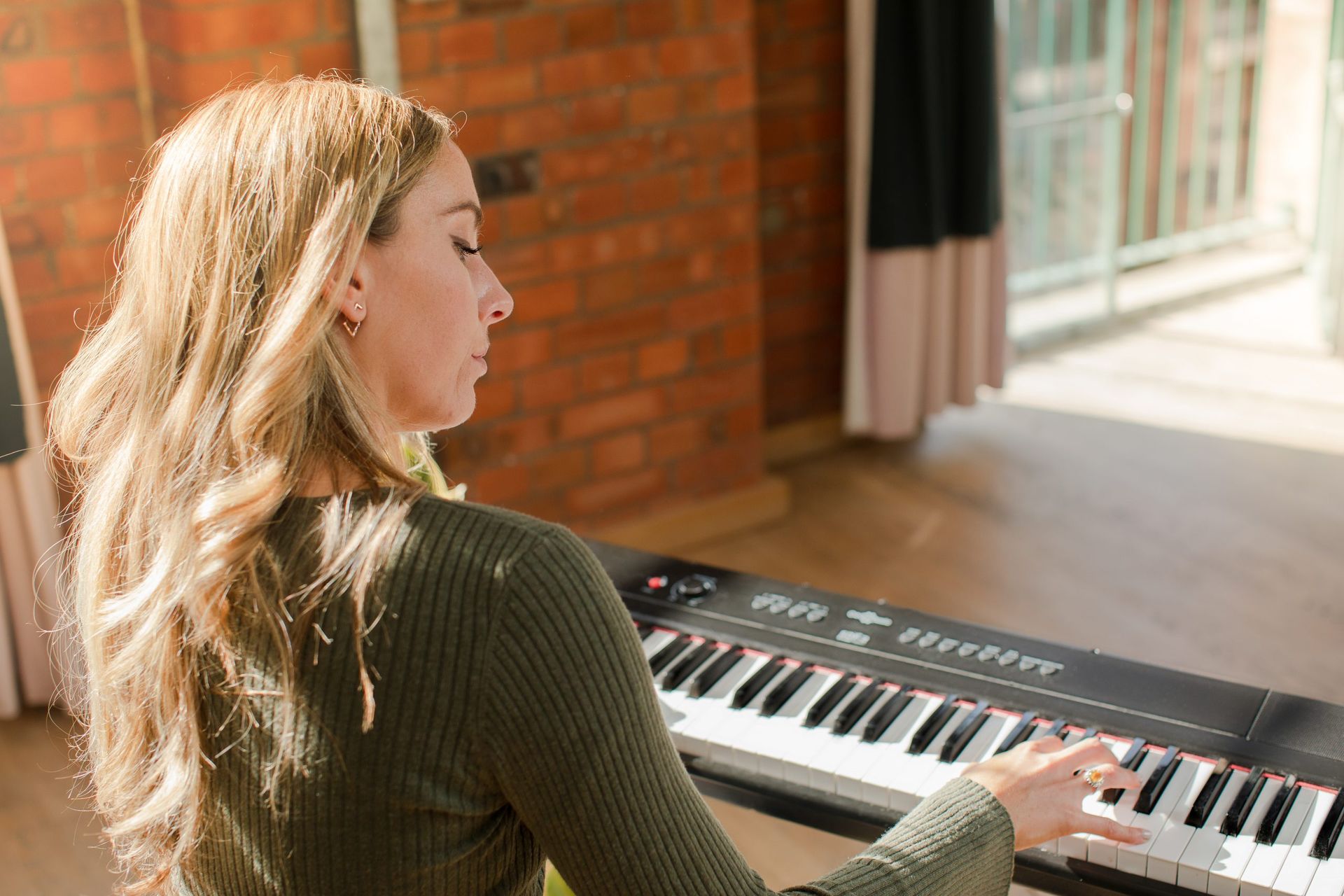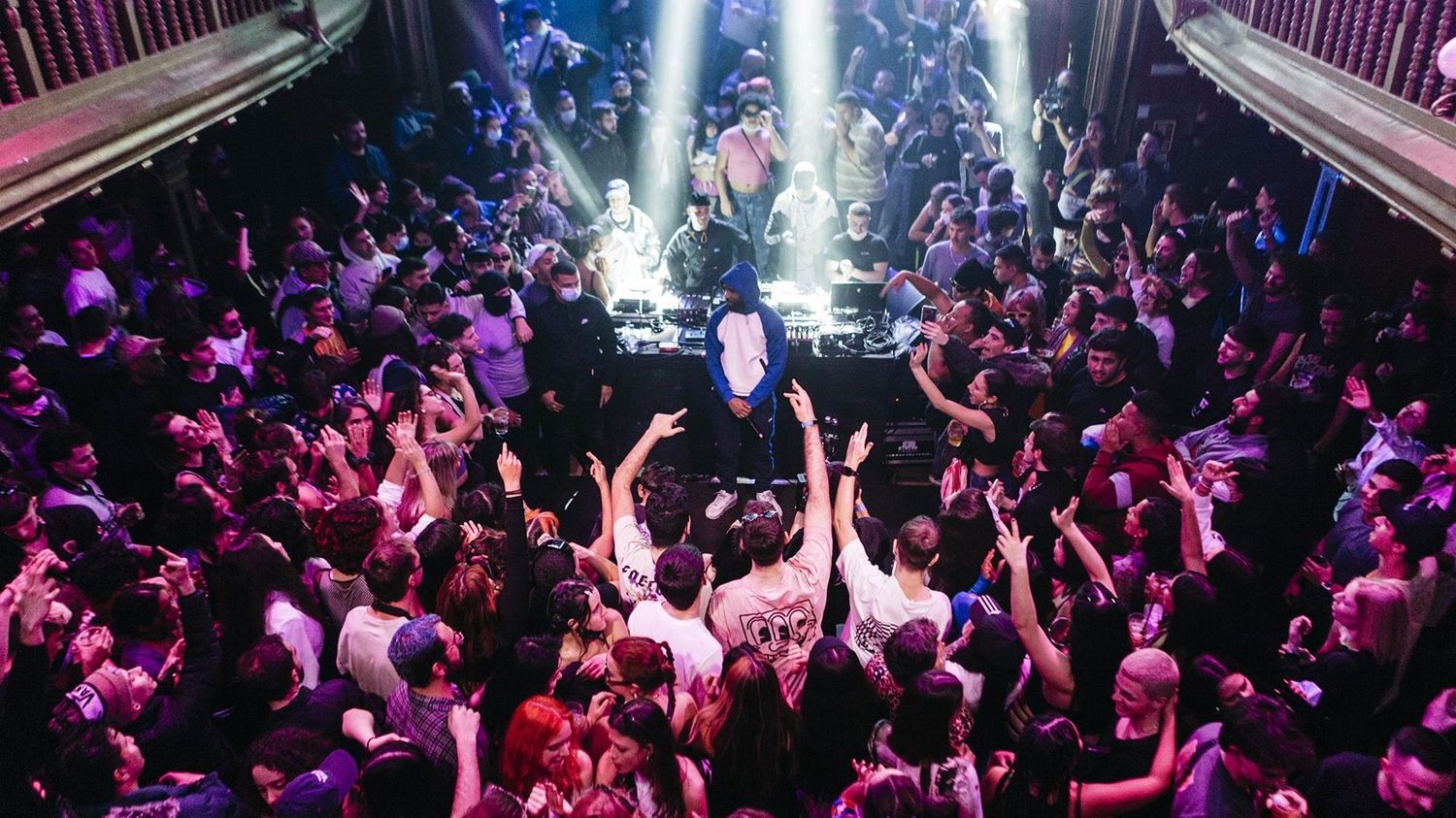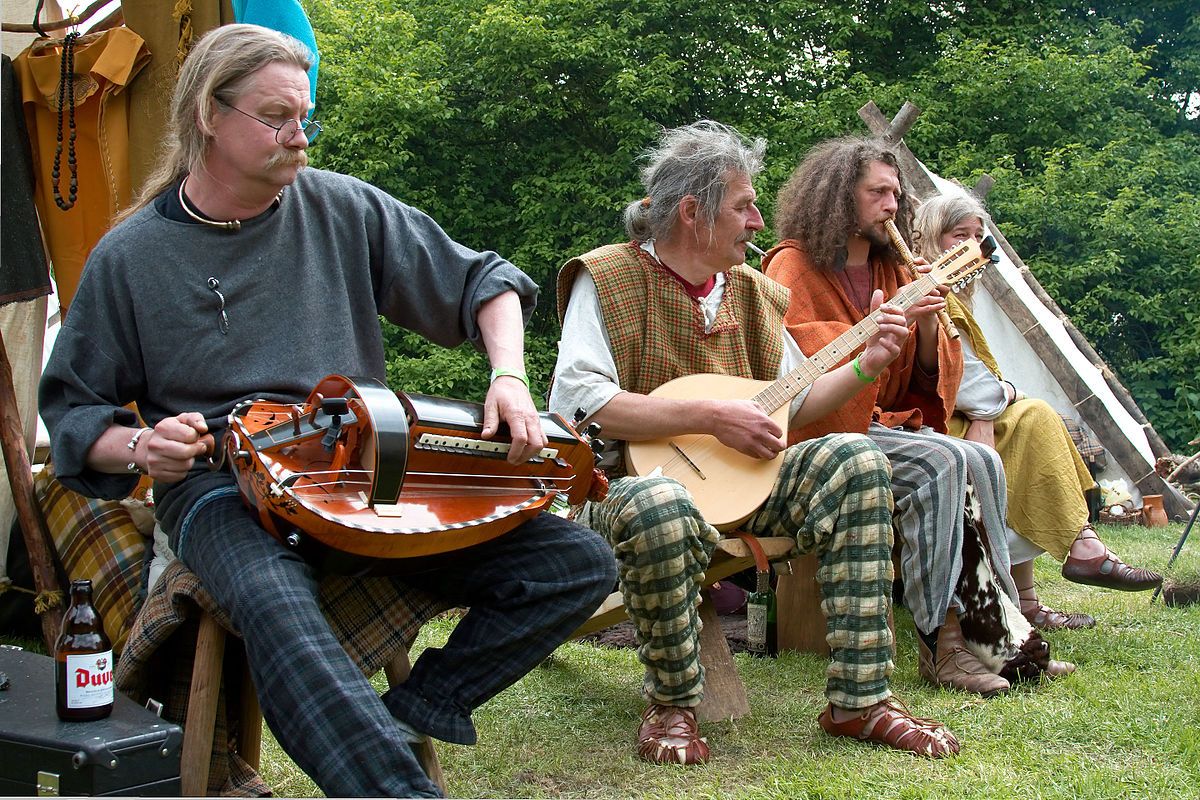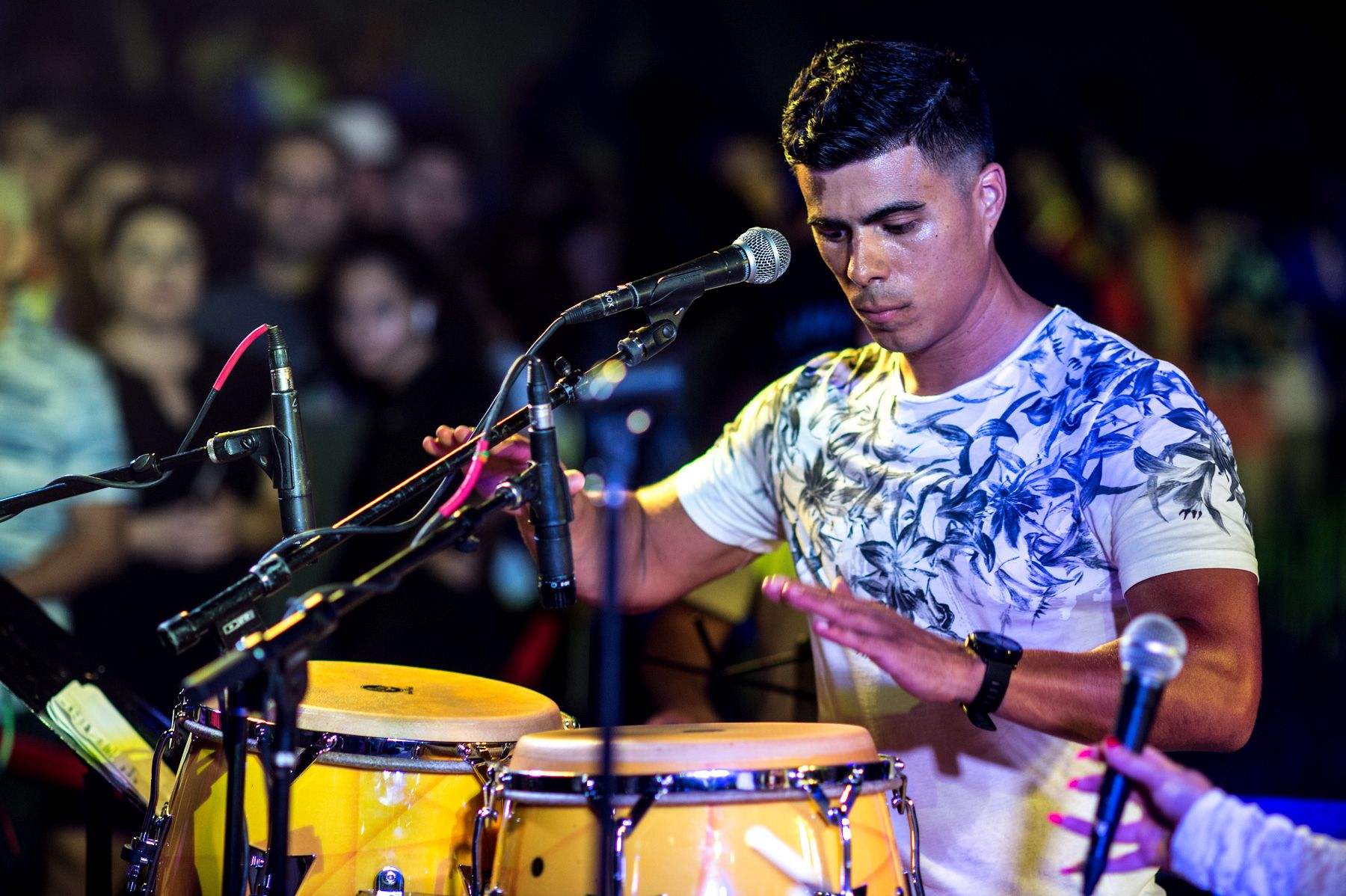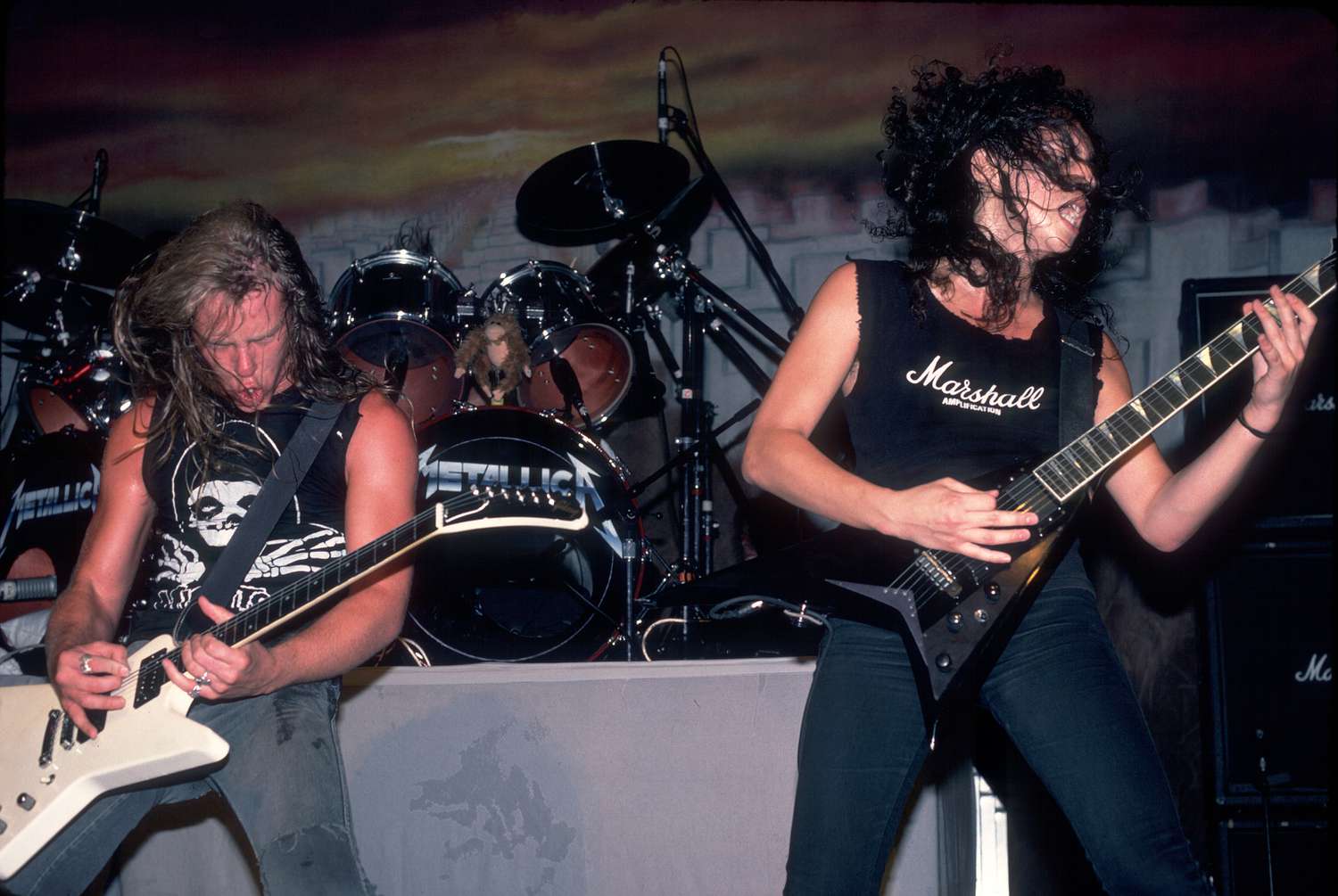Home>Production & Technology>Tempo>What Is The Tempo Of R&B Music


Tempo
What Is The Tempo Of R&B Music
Modified: January 22, 2024
Discover the tempo of R&B music and explore its rhythmic elements, from soulful ballads to upbeat grooves. Learn how tempo sets the mood and drives the rhythm in this popular genre.
(Many of the links in this article redirect to a specific reviewed product. Your purchase of these products through affiliate links helps to generate commission for AudioLover.com, at no extra cost. Learn more)
Table of Contents
- Introduction
- Definition of R&B Music
- The Importance of Tempo in Music
- Understanding Tempo in R&B Music
- Influences on R&B Music Tempo
- Popular R&B Songs with Different Tempos
- The Role of Tempo in R&B Music Production
- Techniques for Establishing and Maintaining Tempo in R&B Music
- The Impact of Tempo on R&B Music’s Emotional and Physical Effects
- Conclusion
Introduction
Welcome to the world of R&B music, where rhythm and blues come together to create an intoxicating blend of soulful melodies and infectious beats. In the realm of music, tempo plays a vital role in shaping the overall feel and mood of a song, and R&B music is no exception. From slow and sensual ballads to upbeat and energetic tunes, the tempo sets the pace and defines the movement of the music.
But what exactly is tempo? In simple terms, tempo refers to the speed at which a piece of music is played. It determines the rhythm and timing of each note and establishes the tempo or pace of the song. Just like in a marathon, where the pace of the runners affects the energy and excitement of the race, tempo dictates the energy and vibe of an R&B song.
R&B music, short for rhythm and blues, is a genre that originated in African-American communities in the 1940s. It is characterized by its soulful vocals, syncopated rhythms, and a strong emphasis on groove and feel. Tempo plays a crucial role in R&B music, as it sets the tone and determines the overall mood of the song.
Whether it’s a heart-wrenching love ballad or an irresistibly catchy dance track, the tempo can make or break a song. A slow tempo can evoke feelings of intimacy and vulnerability, while a fast tempo can create a sense of excitement and energy. Understanding how tempo affects the emotional and physical response to music is key to creating a captivating R&B experience.
In this article, we will dive deep into the world of R&B music and explore the importance of tempo in shaping its unique sound. We will uncover the various influences on R&B music tempo, explore popular R&B songs with different tempos, examine the role of tempo in R&B music production, and discuss techniques for establishing and maintaining tempo in R&B music. Finally, we will analyze the impact of tempo on the emotional and physical effects of R&B music.
So, buckle up and get ready to groove as we embark on a rhythmic journey through the world of R&B music and its intricate relationship with tempo.
Definition of R&B Music
R&B music, short for rhythm and blues, is a genre that originated in African-American communities in the 1940s. It emerged as a fusion of various musical styles, including blues, gospel, jazz, and swing. R&B music is characterized by its soulful vocals, expressive lyrics, and distinctive rhythms.
What sets R&B music apart is its emphasis on groove and feel. The genre explores the delicate balance between rhythm and melody, creating a sound that is both catchy and emotionally compelling. R&B artists often showcase their vocal prowess, using melisma, riffing, and other vocal techniques to deliver powerful performances.
Lyrically, R&B music delves into a wide range of themes, including love, heartbreak, social issues, and personal experiences. The genre provides a platform for artists to convey their emotions and tell meaningful stories through their music.
From its early roots in the 1940s and 1950s with artists like Ray Charles and Sam Cooke, R&B music has evolved over the decades. It has incorporated elements from various genres, such as funk, disco, and hip-hop, while still retaining its soulful essence.
Today, R&B music continues to be a vibrant and influential genre, with artists like Beyoncé, Bruno Mars, and The Weeknd dominating the charts. Its versatility allows for a wide range of subgenres, including contemporary R&B, neo-soul, and alternative R&B, each bringing its own unique twist to the R&B sound.
Overall, R&B music is a genre that celebrates the power of rhythm, melody, and soulful expression. It captures the essence of human emotions and experiences through its compelling lyrics and infectious grooves. Whether you’re dancing to an upbeat R&B track or immersing yourself in a heartfelt ballad, R&B music offers a rich and captivating musical experience.
The Importance of Tempo in Music
Tempo is a fundamental element in music that plays a significant role in shaping the overall feel and impact of a composition. It determines the speed at which a piece of music is performed or played and affects the rhythm, energy, and emotional resonance of the music.
One of the key reasons why tempo is important is its ability to establish the mood of a piece. A slow tempo can create a sense of calmness, introspection, and melancholy, whereas a fast tempo can generate excitement, energy, and vitality. The tempo sets the emotional tone, influencing how listeners interpret and connect with the music.
In addition to mood, tempo also has a profound impact on the physical response to music. A slow tempo can encourage relaxation and a slower heart rate, while a fast tempo can stimulate movement, increase heart rate, and evoke a sense of adrenaline. It essentially serves as the musical pulse that can influence our physiological and psychological state.
Moreover, tempo plays a crucial role in determining the style, genre, and character of a piece of music. Different genres have specific tempo ranges that are associated with their distinctive sound and feel. For instance, a slow tempo is commonly found in ballads and romantic songs, while a fast tempo is typical in dance, pop, and upbeat genres. The tempo becomes an inherent part of the musical identity and helps to define the genre itself.
Furthermore, tempo serves as a guide for musicians when performing together. It creates a sense of synchronization and cohesion among musicians, ensuring that everyone is playing at the same speed and maintaining a consistent rhythm. Tempo acts as a unifying force, allowing musicians to seamlessly communicate and interact with each other during a performance.
From a compositional standpoint, tempo provides a framework for organizing musical ideas and structures. The choice of tempo can influence the pacing of a piece, shaping its structure, dynamics, and overall flow. Composers use tempo as a tool to create tension, build anticipation, or provide a sense of resolution within the music.
Overall, tempo is an essential element of music that affects the emotional, physical, and stylistic aspects of a composition. It sets the mood, influences our physiological response, defines genres, facilitates musical cohesion, and aids in the compositional process. Whether we are consciously aware of it or not, tempo plays a significant role in our perception and enjoyment of music.
Understanding Tempo in R&B Music
In the realm of R&B music, tempo plays a crucial role in defining the genre’s unique sound and character. R&B encompasses a wide range of styles and subgenres, each with its distinctive tempo choices that contribute to the overall feel and groove of the music.
The tempo in R&B music can vary greatly, ranging from slow and sensual ballads to upbeat and danceable tracks. The choice of tempo depends on various factors, including the desired emotional impact, lyrical content, and intended audience response.
One of the defining characteristics of R&B music is the emphasis on groove and rhythm. The tempo serves as the foundation for the groove, providing a steady pulse and feel that listeners can move and groove to. Whether it’s the smooth, laid-back tempo of a slow jam or the infectious, up-tempo rhythm of an R&B dance track, the groove created by the tempo is essential in capturing the essence of the genre.
Slow tempo ballads, often referred to as “baby-making” songs, are a prominent feature in R&B music. These songs typically have a relaxed and sensuous feel, with a tempo that allows the vocalist to showcase their vocal prowess and emotional depth. Slow tempos in R&B ballads evoke a sense of intimacy, allowing the lyrics and melodies to take center stage and deeply resonate with the listener.
On the other end of the spectrum, R&B music also incorporates faster tempos, especially in upbeat and dance-oriented tracks. These songs are characterized by infectious rhythms, catchy melodies, and a high-energy vibe that gets people moving on the dancefloor. Fast tempos in R&B can create a sense of excitement, celebration, and release, allowing for an exhilarating and engaging listening experience.
It’s worth noting that tempo variations can be found within R&B music itself, as artists and producers experiment with different rhythmic patterns and grooves. Some R&B songs may feature tempo changes within the composition, adding dynamic shifts and enhancing the emotional impact of the music.
Understanding the tempo in R&B music goes beyond just the speed at which the music is played. It involves capturing the essence of the groove, the interaction between rhythm and melody, and the ability to evoke specific emotions and responses from the audience. The tempo sets the tone, guides the movement of the music, and ultimately shapes the overall experience of R&B music.
As you explore the world of R&B music, pay attention to the tempo choices in different songs and subgenres. Notice how the tempo influences the feel, energy, and emotional impact of the music. Whether it’s a slow, sultry ballad or an upbeat, infectious track, the tempo in R&B music is a crucial element that defines its unique sound and captivates listeners.
Influences on R&B Music Tempo
The tempo of R&B music is influenced by a variety of factors that shape the genre’s rhythmic patterns, energy, and overall feel. These influences range from cultural and historical elements to individual artistic choices, all contributing to the diverse and evolving landscape of R&B music.
One significant influence on R&B music tempo is the historical and cultural background of the genre. R&B has deep roots in African-American musical traditions, including gospel, blues, and jazz. These genres often incorporated syncopated rhythms, improvisation, and a strong emphasis on groove. The tempo choices in R&B music are influenced by these traditions, reflecting the rich musical heritage and cultural experiences of the artists.
The evolving music technology and production techniques also shape the tempo of R&B music. Advances in recording and production have allowed artists and producers to experiment with different tempos, creating new sonic landscapes and pushing the boundaries of the genre. The use of drum machines, synthesizers, and other electronic instruments has expanded the possibilities for tempo variations in R&B music.
The influence of different musical eras and trends is another factor that impacts R&B music’s tempo. For example, the Motown era in the 1960s introduced a distinct sound characterized by refined vocal harmonies, catchy melodies, and a moderate tempo. In contrast, the New Jack Swing movement of the 1980s and 1990s embraced faster tempos, incorporating elements of hip-hop, funk, and soul into R&B music.
Furthermore, individual artists and producers have their unique artistic vision and preferences when it comes to tempo in R&B music. Some artists may favor slower tempos to showcase their vocal abilities and deliver emotional ballads, while others may opt for faster tempos to create energetic and danceable tracks.
Collaborations and cross-genre influences also contribute to variations in R&B music tempo. Artists often collaborate with producers, musicians, and songwriters from different genres, introducing new ideas and styles that influence the tempo choices in their music. The fusion of R&B with genres like hip-hop, pop, and electronic music has resulted in a wide range of tempo variations and rhythmic experimentation.
Lastly, audience preferences and the current musical landscape play a role in shaping R&B music tempo. The demand for captivating and engaging music influences artists and producers to explore different tempos to stand out in a competitive industry. Popular trends and consumer preferences can impact the tempo choices in R&B music, as artists strive to appeal to their target audience and stay relevant.
In summary, influences on R&B music tempo are myriad and dynamic. Cultural and historical factors, technological advancements, musical eras, individual artistic visions, collaborations, and audience preferences all play a role in shaping the tempo choices within the genre. The diversity and evolution of R&B music tempo contribute to its richness and appeal, creating a vibrant musical landscape that continues to captivate audiences worldwide.
Popular R&B Songs with Different Tempos
R&B music showcases a wide range of tempos, allowing artists to explore different moods, energies, and styles. From slow and sultry ballads to upbeat and groovy tracks, here are some popular R&B songs that exemplify different tempos within the genre.
- Slow Tempo: “Adorn” by Miguel is a prime example of a slow tempo R&B ballad. The laid-back rhythm, soulful vocals, and intimate lyrics create a seductive and emotional atmosphere. Another notable slow tempo R&B song is “Breathe” by Faith Hill, which combines elements of R&B and pop with its soothing melody and heartfelt delivery.
- Moderate Tempo: “No Scrubs” by TLC is an iconic R&B track with a moderate tempo. The infectious groove, catchy melodies, and empowering lyrics capture the essence of 90s R&B. Another popular R&B song with a moderate tempo is “Say My Name” by Destiny’s Child, renowned for its sleek production, harmonies, and rhythmic sensibility.
- Upbeat Tempo: “Crazy in Love” by Beyoncé featuring Jay-Z is an energetic R&B track with an upbeat tempo. Its lively rhythm, catchy horn section, and Beyoncé’s dynamic vocals make it a perfect dance anthem. “Uptown Funk” by Mark Ronson featuring Bruno Mars is another standout R&B track with an infectious, up-tempo groove that pays homage to the funk and soul of yesteryears.
- Midtempo: “Un-thinkable (I’m Ready)” by Alicia Keys is a captivating midtempo R&B song. The smooth blend of Alicia’s soulful voice, heartfelt lyrics, and the steady, midtempo beat creates a mesmerizing listening experience. “PYT (Pretty Young Thing)” by Michael Jackson is another classic midtempo R&B track that effortlessly blends pop, R&B, and funk.
These songs represent just a glimpse of the diverse tempos found in R&B music. Whether it’s the passion and vulnerability of a slow ballad, the infectious energy of an up-tempo track, or the smooth groove of a midtempo gem, R&B music offers a wide range of tempos to suit different tastes and moods.
As you explore the world of R&B, pay attention to the varying tempos in different songs. Notice how the tempo choices contribute to the overall vibe and impact of the music. Whether you want to dive into your emotions, hit the dance floor, or experience a smooth and groovy ride, R&B music delivers an array of tempos to cater to all musical preferences.
The Role of Tempo in R&B Music Production
Tempo plays an integral role in the production process of R&B music. It serves as a guiding force in shaping the overall sound, arrangement, and energy of a song. From the initial stages of composition to the final mixing and mastering process, tempo influences every aspect of R&B music production.
One of the key roles of tempo in R&B music production is establishing the foundation of the track. The tempo sets the pace and rhythmic structure, providing a framework for all the musical elements to come together cohesively. It dictates the timing and placement of each instrument, vocal line, and percussion hit, ensuring that they align harmoniously.
Furthermore, tempo acts as a reference point for the musicians and production team. It helps them synchronize their performances, ensuring that everyone is playing in time and maintaining a consistent groove. This synchronization is crucial for achieving a tight and polished R&B sound, especially when recording live instrumentation.
In addition to synchronization, tempo also influences the arrangement and structure of the song. The choice of tempo can determine the length of each section, the placement of chorus and verse, and the overall pacing of the composition. By manipulating the tempo, producers can create tension, build anticipation, or provide moments of release within the music.
R&B music often incorporates intricate vocal harmonies, ad-libs, and background vocals. The tempo sets the pace and breathing room for these vocal performances, allowing the artists to deliver their lines with precision and emotion. It also influences the phrasing and overall feel of the vocal melody, creating a seamless blend with the instrumental elements.
Tempo also plays a significant role in the stylistic choices made during R&B music production. Different tempos can evoke specific genres or time periods within the R&B umbrella. For example, a slower tempo may lean towards classic soul or neo-soul, while a faster tempo can lean towards contemporary R&B or dance-oriented styles. The tempo sets the tone and influences the sonic aesthetics of the production.
Furthermore, tempo considerations extend to the mixing and mastering stage of R&B music production. The pace and energy of the tempo impact the overall balance, equalization, and dynamic range of the mix. The tempo can guide the placement of effects, transitions, and automation within the final mix, enhancing the overall emotional impact of the music.
In summary, tempo is a fundamental aspect of R&B music production. It establishes the foundation, synchronizes performances, influences arrangement and structure, shapes vocal delivery, informs stylistic choices, and guides the mixing and mastering process. Tempo serves as a vital element in creating a polished and captivating R&B production, contributing to the genre’s distinct sound and appeal.
Techniques for Establishing and Maintaining Tempo in R&B Music
Establishing and maintaining a consistent tempo is essential in R&B music production to ensure a cohesive and polished sound. Here are some techniques that producers and musicians use to establish and maintain tempo in R&B music:
- Click Track or Metronome: Using a click track or metronome during recording sessions is a common technique to establish and maintain tempo. It provides a consistent beat that all musicians can follow, helping to synchronize their performances and ensure tight rhythm throughout the song.
- Reference Tracks: Producers often use reference tracks as a tempo guide. By selecting existing songs with the desired tempo and feel, they can match the tempo of their own production to create a similar vibe or groove.
- Live Drummer or Drum Machine: Having a live drummer or using a drum machine with rhythmic patterns specific to R&B music can help solidify the tempo. Drummers have a natural sense of timekeeping and can lock in the groove, while drum machines provide precise control over the rhythm and tempo.
- Tempo Mapping: When working with multiple sections or tempos within a song, tempo mapping is crucial. This technique involves plotting out tempo changes, time signature variations, and tempo ramps to ensure a smooth transition between different sections of the track.
- Quantization: Quantization is a technique used to align and “tighten” the timing of recorded performances. It involves adjusting the placement of individual notes or beats to align perfectly with the desired tempo grid, ensuring a consistent rhythm throughout the song.
- Tempo Automations: In some cases, intentional tempo variations may be desired to create a specific musical effect. Producers can use tempo automations to gradually increase or decrease the tempo at certain sections of the song, enhancing the emotional impact or creating a sense of build-up or release.
It’s important to note that while these techniques can help establish and maintain tempo, they should also be used in conjunction with artistic judgment and improvisation. R&B music thrives on the organic and spontaneous nature of performances, and slight variations in tempo can add depth and personality to the music.
Ultimately, the goal is to find a balance between maintaining a consistent tempo and allowing room for creative expression. By employing these techniques in R&B music production, producers and musicians can create a solid rhythmic foundation while still capturing the essence of the genre’s soulful and groovy nature.
The Impact of Tempo on R&B Music’s Emotional and Physical Effects
Tempo plays a significant role in shaping the emotional and physical effects of R&B music. The speed at which a song is played can evoke various emotions and elicit distinct physical responses from listeners. Here, we explore how tempo influences the emotional and physical impact of R&B music.
Emotional Impact: The tempo of R&B music has a direct impact on the emotional resonance that a song elicits. Slow tempos, such as those found in R&B ballads, can create a sense of intimacy, tenderness, and vulnerability. The leisurely pace allows the music to breathe, giving room for heartfelt lyrics and emotive vocal performances to deeply resonate with listeners. These slow tempos often evoke emotions such as love, longing, and introspection.
On the other hand, faster tempos in R&B music can generate feelings of excitement, energy, and positivity. Upbeat R&B tracks with lively rhythms and energetic melodies tend to create a sense of joy, celebration, and liberation. These faster tempos inspire listeners to dance, move their bodies, and let loose, triggering a release of endorphins and a heightened state of enthusiasm.
Moreover, tempo variations within a song can intensify the emotional impact. Dramatic tempo changes, such as a sudden increase or decrease in speed, can create a sense of tension or release. These variations can heighten the emotional journey and captivate the listener by adding dynamic shifts that mirror the ups and downs of life experiences.
Physical Effects: The tempo of R&B music also has a palpable physical impact on listeners. Slow tempos can encourage relaxation and a slower heart rate, allowing listeners to unwind and find solace in the music’s soothing rhythms. These slower tempos create a sense of calmness and synchronicity with the body’s natural rhythm, promoting tranquility and a sense of well-being.
Conversely, faster tempos have a stimulating effect on the body. Upbeat R&B tracks with infectious rhythms, pulsating beats, and lively melodies can prompt physical responses such as tapping feet, nodding heads, and spontaneous body movement. The energizing tempo can increase heart rate, boost adrenaline levels, and induce a heightened sense of excitement and liveliness.
In both cases, the physical response to R&B music’s tempo is closely intertwined with its emotional impact. The body’s physical reaction intensifies the emotional experience, creating a deep connection between the music and the listener’s physical and emotional state.
Overall, the tempo of R&B music plays a vital role in shaping its emotional and physical effects. The choice between slow and fast tempos imparts specific feelings, moods, and physical responses to the music. By understanding and utilizing tempo effectively, R&B artists and producers can create a captivating musical experience that resonates with listeners on both an emotional and physical level.
Conclusion
Tempo is an essential component of R&B music, impacting its overall sound, mood, and emotional resonance. From slow and sensual ballads to upbeat and energetic tracks, tempo sets the pace, establishes the groove, and influences the listener’s emotional and physical response.
R&B music encompasses a wide range of tempos, each contributing to the genre’s diverse and captivating sound. Slow tempo ballads create an intimate and vulnerable atmosphere, allowing for deep emotional connections. Upbeat and faster tempos bring energy and excitement, compelling listeners to move and dance along.
The influences on R&B music tempo are vast, ranging from cultural and historical factors to individual artistic choices. The tempo in R&B is shaped by the rich musical traditions of blues, gospel, and jazz, as well as the evolving trends and technological advancements in music production.
Establishing and maintaining tempo in R&B music production involves techniques like click tracks, reference tracks, live musicians, and quantization. These techniques ensure a cohesive and polished sound while still allowing for artistic expression and variations that add depth to the music.
The emotional and physical effects of R&B music are strongly influenced by tempo. Slow tempos evoke intimacy, introspection, and relaxation, while faster tempos create excitement, energy, and joy. These tempo-induced emotions are closely connected to physical responses, as the body instinctively reacts to the rhythm and pulse of the music.
In conclusion, tempo is a fundamental aspect of R&B music that shapes its essence and appeal. It sets the mood, guides the groove, and elicits emotional and physical reactions from listeners. R&B music’s diverse tempos encompass a spectrum of emotions and experiences, providing a rich and captivating musical journey for all who indulge in its soulful melodies and infectious rhythms.


